Imperfect Performance: The crash of MK Airlines flight 1602

On the 14th of October 2004, a Boeing 747 cargo plane was accelerating down the runway in Halifax, Nova Scotia when the takeoff began to go horribly wrong. Dragging its tail along the ground in a shower of sparks, the huge freighter proved unable to become airborne in time to clear an earthen berm, which ripped off the 747’s tail section and sent the plane crashing to earth in a forest beyond the runway. None of the seven crewmembers survived the fiery impact, which reduced the jumbo jet to little more than charred rubble.
Investigators would find that the plane was within weight limits, its stabilizer was set correctly for takeoff, and its engines were working perfectly. So why couldn’t it get into the air? Despite the destruction of the aircraft’s cockpit voice recorder, investigators were able to piece together a probable series of errors, made in the dead of night on a Windows laptop behind the cockpit, that led to MK Airlines flight 1602 attempting to take off without enough power. The accident would also force regulators to take a second look at the airline, a rapidly expanding African cargo carrier, which, it would soon be discovered, had some of the least restrictive flight duty time limits of any airline in the world — a shocking company policy that was almost certainly the root cause of the crash.

In 1990, Zimbabwean Michael C. Kruger founded a freight airline which he named MK Air Cargo D’Or, beginning operations that year with a single Douglas DC-8. Due to Zimbabwe’s unstable politics and suboptimal location, the airline was registered in the West African nation of Ghana instead, while its corporate headquarters were initially in Nigeria, and later near Gatwick Airport in the UK. Focusing on contract-based cargo operations, the airline, which was renamed MK Airlines Limited in 1993, began carrying freight to and from Africa, and later around the world, using a growing fleet of DC-8s and eventually Boeing 747s. By 2004, it had twelve airplanes, including six 747s, and was climbing up the ranks of the world’s cargo airlines, expanding at a rate of about one airplane annually as its freight turnover grew at a blistering 30% year on year.
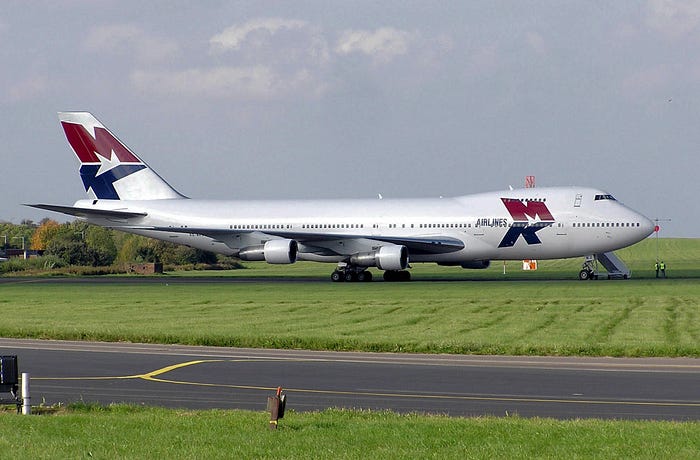
Michael “MK” Kruger’s eponymous airline employed a somewhat eccentric personnel strategy, declaring publicly that their goal was to provide employment opportunities to residents of a disadvantaged region of the world, specifically southern Africa. What they really meant was that they hired flight crews who appeared to be almost exclusively white Zimbabweans, most of whom got their jobs through personal connections with the owner, and may have known each other even before flying for MK Airlines. Management claimed that this helped give the airline a familial atmosphere.
But while the airline’s pilots did enjoy close personal relationships, working at MK Airlines was not the utopia that management would have liked outsiders to envision. The pilots themselves were certainly under no illusions as to the quality of the experience, because the airline suffered from high personnel turnover despite supposedly being a “family.” This turnover rate left the airline with a constant shortage of pilots, especially on the 747, which forced the remaining employees to work longer hours and spend more time away from their families.

One of these crews was scheduled to complete a routine four-sector trip on the 13th and 14th of October from Luxembourg to Bradley International Airport in Windsor Locks, Connecticut, USA; then on to Halifax, Nova Scotia, Canada; and Zaragoza, Spain, before returning to Luxembourg. On board would be five pilots — two captains, two flight engineers, and one first officer — as well as a ground engineer and a loadmaster. For the initial flight from Luxembourg to Bradley, the flight crew would consist of Captain David Lamb, First Officer Gary Keogh, and Flight Engineer Steven Hooper. After arriving in Bradley, Lamb and Hooper would be swapped out for Captain Michael Thornycroft and Flight Engineer Peter Launder, while First Officer Keogh would remain on duty. Ground Engineer Mario Zahn and Loadmaster Chris Strydom would assist them throughout the four-sector trip, which had been rolled into one mammoth duty day. (Thornycroft was from South Africa; Zahn was a dual German-South African citizen; and all the other crewmembers were from Zimbabwe.)
On the morning of October 13th, the crewmembers arose in their hotel in Luxembourg in preparation for the trip, designated flight 1601 on the way out and flight 1602 on the way back. The flight crew had flown in on other airplanes the previous day, while the ground engineer and loadmaster were already on duty, having arrived in Luxembourg that same day from Johannesburg, South Africa aboard the same Boeing 747.
The departure of flight 1601 was originally slated for 10:00 UTC, but the plane was late arriving from Johannesburg, and just as the crew were leaving the hotel at 8:48, a company dispatcher called Captain Lamb and told him that the flight would be delayed. The crew departed again two hours later, but when they arrived at the airport, not all was in order. Cargo was still being loaded, and there was too much of it: Captain Lamb had to request that 4,000 kilograms of goods be removed to keep the plane within weight limits. After that, the loadmaster discovered that some of the cargo pallets were contaminated with dirt and would not be accepted in Bradley due to controls on the spread of invasive species and diseases; vacuuming the pallets thus delayed the flight even further.
By the time flight 1601 departed Luxembourg at 15:56, it was nearly six hours behind schedule. But at MK Airlines, crews were simply expected to extend their duty day to accommodate the delay. Already scheduled for a shift lasting 24 hours and 30 minutes — 30 minutes longer than was allowed by the company’s own rules — the pilots would now have to stay up considerably longer in order to complete the flight back to Luxembourg. Apparently this was a common occurrence, and the pilots were far from pleased, as Captain Lamb wrote in a voyage report to the company: “According to our brief the duty period required to complete this flight is 24 hrs 30 min. In terms of Part A (7) the max duty period is 24 hrs. The crew were called out to operate starting this duty period at 1200Z only to finally depart at 1600Z. Can anything be done to correct the constant delays experienced in LUX for the Bradley run (re: clean pallets and crew callout when [the aircraft] is ready)?”
Lamb could not have known that the report, so full of unspoken subtexts, would be his last.

At 23:22 UTC, flight 1601 landed at Bradley Airport in Connecticut, where ramp personnel offloaded its original cargo and boarded a load of tractors, several pallets of consumer goods, and a 13,000-kilogram roll of steel. As they did so, they spotted two crewmembers sleeping in the passenger area on the upper deck behind the cockpit, splayed out across the first class seats.
At 4:03 UTC, now with Captain Thornycroft and Flight Engineer Launder replacing Lamb and Hooper, the airplane departed Bradley as flight 1602, bound for Halifax. During the takeoff, the pilots used what is known as de-rated thrust: an engine power setting short of maximum thrust, but which is calculated to be adequate under the circumstances. Because the plane was not carrying a large amount of fuel, it was relatively light, and so maximum thrust was not necessary to achieve takeoff speeds; therefore, de-rated thrust was used in order to minimize wear and tear on the engines.
Flight 1602 departed normally, and just over one hour later it landed in Halifax, whereupon it taxied to the ramp to pick up a load of several thousand kilograms of frozen lobsters. At the same time, they uplifted a large amount of fuel for the transatlantic journey to Zaragoza. All of this weight information went onto a load sheet compiled by the loadmaster, who tallied it up to arrive at a total aircraft weight of 350 metric tons (350,000 kg). He had actually undercounted by three tons, because the empty weight of the aircraft did not include the mobile maintenance kit, the crewmembers, or their catering; and because the weight provided for the cargo omitted the wooden skids on which the pallets of frozen lobsters were packed. But this error would prove inconsequential, as the weight was under the limit either way.

At this point, somebody needed to use the information from the load sheet to calculate the aircraft’s takeoff performance figures. These include the proper engine power settings as well as the so-called “V-speeds”: V1, the fastest speed at which the takeoff can be rejected; VR, the speed at which the pilot will rotate for takeoff; and V2, the safe climb-out speed. All of these values are affected by the weight of the airplane, but for the purposes of the following, only VR is important.
Traditionally, these figures were calculated by hand with reference to pages and pages of speed tables in the flight manual. Today, however, this task has been almost completely taken over by computer programs. The year 2004 fell during the transition between the two, and in fact MK Airlines had made the switch only a few months before the fateful flight, when they fitted each Boeing 747 with a Windows laptop running an app called the Boeing Laptop Tool, or BLT. This app was capable of calculating any flight parameters that a pilot could conceivably need, but as the crew of flight 1602 were about to discover, it was built to Windows 98 standards of user interface design.

As the software was designed by Boeing and approved by the Federal Aviation Administration, there were well-defined standard procedures intended to ensure that it was used correctly. Officially, during the stopover in Halifax the software should have been used roughly as follows. Having acquired the load sheet from the loadmaster, First Officer Keogh would have gone to the laptop and opened the BLT to the “performance” page. There are two versions of this page, one for a de-rated takeoff and one for a max thrust takeoff; because de-rated thrust was used at Bradley, this was the version to which the program would have defaulted. All of the various data entry fields on the performance page would also have defaulted to the same values which were entered before the takeoff from Bradley Airport earlier that night. The first officer would then have cleared these values and entered data about the runway and weather conditions in Halifax, as well as the planned aircraft configuration, such as the flap position and whether they would use anti-ice. After this, he would have clicked the “calculate” button, which would generate a maximum allowable weight given the constraints of the runway and configuration. Keogh’s job would have been to compare this weight to the actual weight to determine whether a takeoff was possible. In this case, the generated maximum would have been 321 metric tons, less than the plane’s actual weight, meaning that the plane was now too heavy to use a de-rated takeoff (which, lest you need a reminder, was the setting to which the page would have defaulted).
The first officer should then have clicked on the BLT symbol to return to the home page, selected “max thrust” from a drop down menu, and clicked “calculate” again. This would have produced a maximum allowable takeoff weight of 355 metric tons, greater than the plane’s actual weight, allowing him to proceed. He could now enter the plane’s actual weight into the “planned weight” field and click “calculate” a third time. With the planned weight now entered, clicking this button would generate the appropriate V-speeds and engine power setting for a takeoff on that runway with that configuration and at that weight. He should then have copied these values onto a paper takeoff card for use in the cockpit, and then deleted the actual weight from the “planned weight” field. Finally, the captain should have taken the takeoff data card, entered the weight into the BLT performance page again, and run the calculations a second time to verify the results.

What the crew actually did is not known for certain, but investigators would later come up with a convincing theory, and it did not match the official procedure described above. For one, it is unknown who actually used the BLT software. It may not have been First Officer Keogh, who probably tried to use the layover to catch some sleep, considering that he had to be present for every takeoff and landing on all four sectors. However, it definitely would not have been Captain Thornycroft, because by all accounts he was not comfortable using personal computers. It might have been Loadmaster Strydom, who was also authorized to use the software, but the possibility that it was Keogh could not be ruled out either.
In any case, the person using the software almost certainly stumbled into a vulnerability in the program’s user interface architecture. From the performance page, it is possible to open a separate “weight and balance” popup by clicking the “wt and balance” button. On this page, the user can enter the fuel weight, cargo weight, passenger weight, and so on to calculate the plane’s total weight and center of gravity. The official procedure does not demand the use of this page, but MK Airlines crews usually used it anyway. The problem is that this page retains the last information entered, just as the performance page does, and will in fact automatically paste that information into the “planned weight” field on the performance page when the popup is closed. There is no warning to the user that this will occur.

It is thought, therefore, that whoever was using the BLT opened the weight and balance popup, which contained the weight information for the plane’s previous takeoff from Bradley Airport. This person then closed the popup without changing anything, causing the plane’s weight at Bradley to appear in the planned weight field on the performance page. If the user then clicked “calculate,” the program would have generated V-speeds and engine power settings for a takeoff with the same weight as the Bradley takeoff but on the Halifax runway.
The problem was that with the addition of the lobsters and the transatlantic fuel load, the plane now weighed 353 metric tons, as opposed to 240 metric tons on takeoff from Bradley. With the lower Bradley weight entered in the system, it was possible to generate an engine power setting for a de-rated takeoff, even though the plane was actually too heavy to perform a takeoff with de-rated thrust at Halifax.
As a result of this error, the person using the program copied down the wrong numbers onto the paper takeoff data card, including a VR (rotation speed) of 129 knots, as opposed to the 162 knots that should have been used. They also wrote down the erroneous engine pressure ratio (EPR) setting. The EPR is the ratio of the pressure at the engine inlet to the engine exhaust pressure and is the value used to determine takeoff thrust settings. But because the crewmember had accidentally selected a de-rated takeoff with a weight that was 113 tons too low, the software produced a takeoff EPR of 1.30, as opposed to the max thrust setting of 1.60 EPR which should have been used. With these dangerously low EPR settings and V-speeds transcribed onto the takeoff data card, flight 1602 was already three quarters of the way to disaster.

There were still two checks which were designed to catch incorrect parameters on the takeoff data card. As mentioned earlier, the captain should have gone to the BLT software, re-entered the weight, and run the calculations again to verify them. This would almost certainly have revealed the error, and therefore was probably not done. Furthermore, the weight written on the takeoff card was probably the correct weight copied down by the loadmaster, otherwise the pilots would probably have noticed that it was too low when they checked it against the load sheet. The mismatch between the weight and the performance figures also should have been obvious if the crew had performed the required “gross error” cross-check, which called for them to reference a table of approximate values to ensure that their numbers were in the right ballpark given the plane’s weight. Since the discrepancy was not found, this check too must have been omitted.
What is known is that when MK Airlines flight 1602 taxied to the runway for takeoff, the pilots had set their target EPRs to about 1.30 and planned for a VR speed of 129 knots. They must have had no idea that if they used these values, the plane would fail to become airborne within the available length of the runway.

At 6:53 UTC — 2:53 local time — Captain Thornycroft and First Officer Keogh pushed the thrust levers forward to 1.33 EPR, and the huge, white 747 rumbled off down the night-darkened runway. Amid the blackness, it might have been hard to tell that the plane was not accelerating as quickly as it should have.
5,500 feet down the 8,800-foot runway, the plane finally reached the erroneous rotation speed (VR) of 129 knots, and the flying pilot began to pull back on the controls for liftoff. The nose rose up off the runway, but the main landing gear failed to follow, and the 747 continued hurtling down the runway on its rear wheels. At a weight of 353 metric tons, an airspeed of 129 knots simply wasn’t sufficient to get the plane airborne. And with the engines set to 1.30 EPR instead of 1.60, the airplane could not accelerate to the required airspeed before running out of runway.

Seconds later, with just under 800 feet of runway remaining, the flying pilot must have realized that something was wrong, as he pulled back so sharply that the tail struck the runway, dragging along the asphalt in a shower of sparks. Less than two seconds later, he advanced the thrust levers to go-around power. But still the plane did not lift off, as the engines took several seconds to spool up. As the 747 careened past the end of the paved surface, the main landing gear just barely left the ground, but the tail continued to scrape the pavement and then the grass, hanging low as the jet struggled along with its nose pointed at the sky. In the cockpit, there must have been a growing sense of panic. The pilots were doing all they could, but it was already too late. The tail finally lifted off the ground, but the plane was headed straight for an earthen berm supporting the instrument landing system equipment, as well as a forest beyond. Moments later, with a shuddering boom, the tail slammed into the berm at a distance of 1,150 feet past the end of the runway, ripping off the entire empennage in a hail of flying metal. The rest of the plane remained airborne momentarily, crippled beyond any hope of recovery, before it pitched nose first into the forest, where it slammed to earth and broke apart, sending huge sections of the 747 tumbling through the woods in a great ball of fire.

Although firefighters were on the scene within five minutes, they faced an apocalyptic inferno which left little hope that anyone on board had survived. Pieces of the 747 and its cargo were strewn for several hundred meters from the earthen berm, through a forest, and into the edge of a quarry, and nearly all of it was on fire. By the time rescue crews managed to reach the crushed and charred remains of the cockpit, it was obvious that all seven crewmembers had died instantly when the 747 plowed nose-first into the ground.
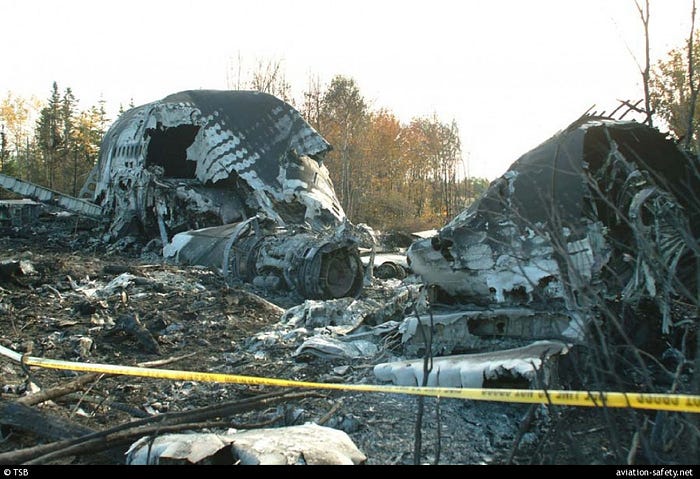
◊◊◊
Within hours of the crash, investigators from Canada’s Transportation Safety Board (TSB) were on the scene. Their first priority was to find the 747’s black boxes, which had been mounted in the center section above the wings. Unfortunately, this was the area which suffered the most fire damage, and the integrity of the data within the recorders was far from certain. When the boxes were pulled from the ash, it was immediately clear that the cockpit voice recorder had been destroyed; in fact, the tape inside the recorder had completely melted due to prolonged exposure to fire. As a result, what the pilots said and did before the crash will never be known.
The investigators’ job would have been even harder had the flight data recorder not miraculously survived the inferno. It revealed that the engines were not producing enough power, and that the pilot attempted to rotate at too low an airspeed, resulting in a tail strike and runway overrun culminating in the fatal collision with the earthen berm.

This necessarily raised the question of whether the berm should have been there at all. Had the plane not collided with it, it might still have hit the trees beyond, causing it to crash anyway, but it was difficult to say for sure.
The berm had been constructed in 2003 to increase the height of the airport’s instrument landing system equipment, bringing it into compliance with international regulations related to its range and coverage. Its position more than 1,000 feet beyond the end of the runway put it outside the required obstacle-free zone intended to protect planes against damage in runway overrun incidents. Furthermore, down-sloping terrain in the area meant that the concrete platform atop the berm was actually level with the runway, so it was not considered an obstacle for departing or arriving aircraft. The berm thus complied with all regulatory requirements. Nevertheless, some crews who routinely flew into Halifax were not pleased with its presence, fearing that a plane would be severely damaged if it happened to hit it. Unfortunately, their concerns were shown to be well-founded.
The more important question facing the investigators was why the plane didn’t have enough thrust to become airborne. No mechanical problems were found, and the engines responded promptly when the pilot commanded go-around power just before the crash, proving that they were capable of generating sufficient power. Furthermore, the “bugs” — small plastic markers on the pilots’ instruments, in this case on the EPR gauges — had been set to a value of about 1.30 EPR, the exact figure which was actually used, according to the flight data recorder.
Investigators ultimately used logic and deduction to rule out a number of possible ways in which the pilots might have arrived at the erroneously low EPR settings and V-speeds. After many months of studying company procedures and the finer workings of the Boeing Laptop Tool, they were left with a single most probable scenario: that whoever used the BLT to calculate the takeoff parameters accidentally opened and then closed the weight and balance popup, causing the takeoff weight from their previous departure from Bradley Airport to appear in the “planned weight” field, where it was then used in the V-speed and EPR calculations. This would have produced figures identical to those actually used, strongly supporting the assumption that this was in fact what occurred. Checks which should have caught this error therefore must have been omitted.
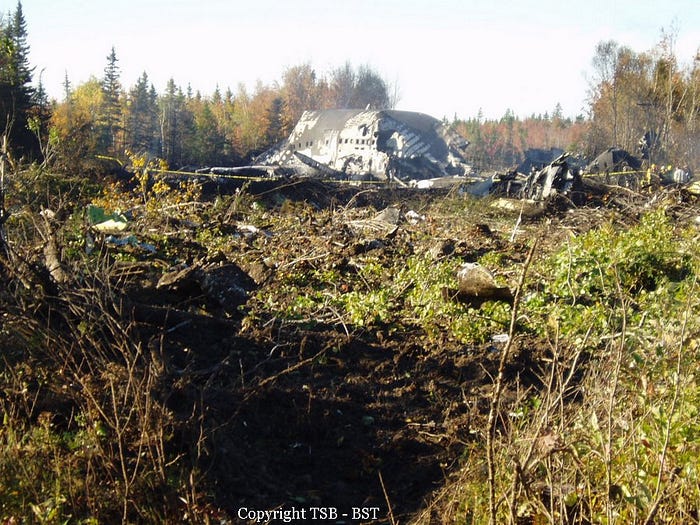
Investigators noted that pilots and loadmasters at MK Airlines received little or no formal training on the use of the BLT software. Instead, they were given a notice regarding the software’s installation along with a 46-page user manual which they were expected to “self-study.” Needless to say, it is doubtful that most pilots read the manual in any detail, especially since they did not have to demonstrate knowledge of the software on an exam. It was therefore unlikely that the crewmembers knew how the software would behave when the weight and balance popup was opened then closed, even though this topic was covered in the manual.
In the United States, as in many other countries, the adoption of so-called “electronic flight bag” systems, such as the BLT, was strictly controlled, and the process required careful oversight by the Federal Aviation Administration in order to ensure that crews were properly trained in its use and that the software itself was free of potentially dangerous flaws. However, MK Airlines’ state of registration, Ghana, had no regulations related to electronic flight bag technologies, and the airline was under no obligation to seek approval or oversight of its adoption of the BLT. Although MK Airlines did generally follow FAA and Boeing guidelines for introducing the technology, with the exception of the training regime, it received no supervision while doing so.
Investigators did note that the BLT contained a feature which might have prevented the accident. The tool came with a printer which could print out Boeing-designed takeoff data cards, which would have included the aircraft weight that was used in the EPR and V-speed calculations. Had the erroneous weight been printed on the card, the pilots might have noticed the problem. But MK Airlines had decided to continue using its own hand-written takeoff data cards, which relied on crewmembers correctly copying the figures produced by the BLT, rather than the Boeing cards. As a result, the correct weight was probably copied off the load sheet without checking what weight was actually used in the BLT calculations.
Who operated the BLT software before the fateful flight, who copied down the information onto the takeoff data card, and why the checks were missed cannot and will not ever be known due to the destruction of the cockpit voice recorder. But while we can’t be sure whether that person was Loadmaster Chris Strydom or First Officer Gary Keogh, one thing is certain: their mistake was almost certainly the result not only of poor training, but also fatigue. It was this area of inquiry which produced the investigation’s most stunning conclusions, and led regulators to take a second look at the airline.
According to MK Airlines company policy, the maximum time on duty for a 747 crew operating four sectors was 24 hours, of which no more than 18 hours could be spent in the air. This gave MK Airlines quite literally one of the least restrictive flight duty time schedules of any airline known to Canadian authorities. A typical airline pilot in the US has a duty limit barely half as long. But the official company policy was only the tip of the iceberg.
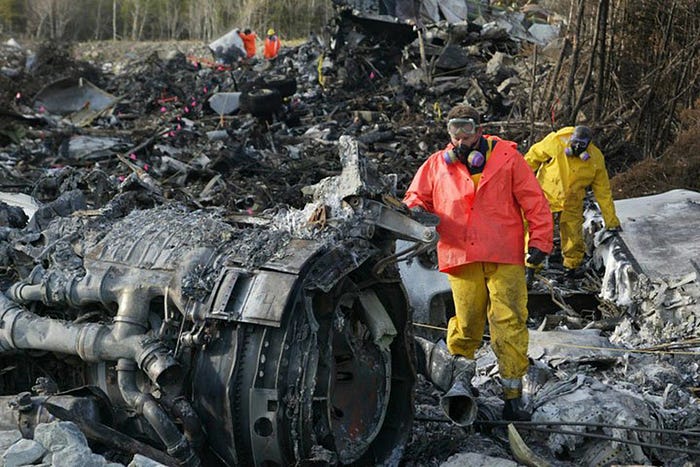
After reviewing MK Airlines’ Boeing 747 crew logs over several months, the TSB determined that 71% of all duty periods were scheduled in excess of the 24-hour limit, including the accident flight. However, pilots often ended up working even longer hours because of the airline’s policy of “completing the mission” in one shift regardless of any delays. After accounting for the time actually flown, rather than merely the time scheduled, an astonishing 95% of all MK Airlines duty periods were longer than 24 hours.
Needless to say, such long duty periods took a serious toll on pilots. The airline had developed an official policy allowing one pilot to go back to the crew compartment to sleep during cruise flight, which was not permitted under international regulations. But this was hardly enough to correct the severe fatigue which would develop during these long shifts. Indeed, even with naps taken while on the plane, this sporadic and limited sleep over such long periods would leave flight crews severely impaired, with decreased alertness, increased reaction times, and degraded judgment.
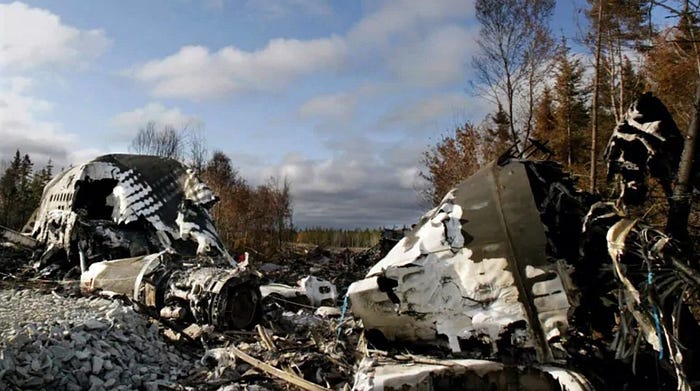
The problem was even worse for the non-flying crewmembers. MK Airlines had no duty time limits at all for loadmasters and ground engineers, who were simply expected to sleep on duty whenever they got a chance. At the time of the accident, the flying pilots had been on duty for 19 hours and awake for longer, but the loadmaster and ground engineer had been on duty for 45.5 hours and counting! Examinations of MK Airlines records revealed that loadmasters sometimes spent as long as a week on board the aircraft, flying all over the world across many time zones while trying to grab what sleep they could in the crew lounge. It was a job schedule that was quite literally killing the airline’s staff. Even First Officer Keogh would have been fatigued enough from his 19 hours on duty to have missed the presence of the wrong weight in the BLT program, but if it was the loadmaster Chris Strydom who made this error, it would be even more understandable. And regardless of who made the first mistake, it was all but certain that fatigue caused the pilots to skip the cross-checks that would have caught it.
This brutal lifestyle was creating tension between crewmembers and management, despite the latter’s insistence that they were one big family. Captain David Lamb had complained about it in a voyage report just hours before he died in the crash of flight 1602. But the airline couldn’t reduce pilots’ hours without compromising its corporate goals, so nothing changed, and turnover consequently began to increase as more employees left for work elsewhere. The resulting shortage of pilots only made matters worse and accelerated the exodus. By the time of the accident the airline was probably running out of white Zimbabweans who were willing to do the job (as that group was never very numerous to begin with). A year or two previously, MK Airlines had broken from this esoteric hiring model and brought in contracted pilots from Argentina to cover shifts, but at the time of the accident no such contract was active, and existing crews were again being pushed to the limit.
Investigators also found that airline management and pilots generally believed that they could bend or even break rules if they deemed it necessary to “complete the mission.” This had created a culture where adherence to standard operating procedures was extremely lax, resulting in out-of-date manuals, skipped checks, and poor training. Ghanaian regulators had failed to detect the problem because they visited the airline less than half as many times as required, a failure which Ghana’s Civil Aviation Authority blamed on the increased oversight needs of another carrier.
Given MK Airlines’ history, however, better oversight was clearly needed. It turned out that the crash in Halifax was not MK Airlines’ first major accident — in fact, it was its fourth. In 1992, one of its DC-8s crash-landed and caught fire in Kano, Nigeria. Four years later, another DC-8 struck trees on approach to Port Harcourt, Nigeria, crashed on the runway, and veered off into the grass. And in 2001, a 747 crash-landed in Port Harcourt and caught fire, killing one of the 13 people on board. This accident history had made Transport Canada reluctant to give MK Airlines permission to fly in the country, but it was eventually swayed by the airline’s swift submission of a comprehensive improvement plan and the US FAA’s high rating of Ghanaian air safety regulators. This trust ultimately proved to be misplaced. In the wake of the crash in Halifax, the FAA downgraded Ghana’s safety rating, and MK Airlines was banned from the US. The airline eventually went bankrupt and ceased operations in 2010.
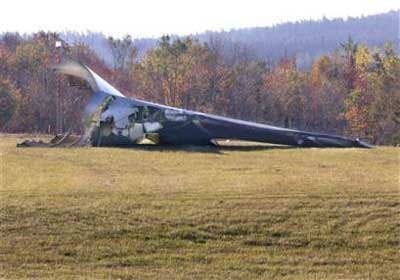
Despite all of its damning findings, the TSB issued only one recommendation, that airliners be equipped with a system which can alert the crew if performance is insufficient for takeoff. The lack of any recommendations related to pilot fatigue was criticized by victims’ family members and labor advocates, who believed that cargo airlines would continue to use unsafe duty time limits unless regulatory authorities in Ghana and other countries could be pressured to crack down on the practice. MK Airlines belligerently took the opposite stance, rejecting any blame and arguing that there was insufficient evidence for the TSB’s theory about the cause of the crash.
In the end, the crash of flight 1602, and the fate of the airline which made that crash inevitable, should stand as a cautionary tale. MK Airlines management wanted to believe that they were a close-knit, familial organization which provided job opportunities to what it termed “disadvantaged regions” and was capable of getting the job done in adverse conditions. In reality, the airline was a deadly machine which exploited the very people it claimed to support, and therein lay its undoing. Its business model and its hiring model were both unsustainable, but instead of adapting, it drove its employees into the ground, milking them until there was nothing left. Unfortunately, the seven crewmembers of flight 1602 paid a far higher price for that corporate recklessness than any executives or managers ever will.
_________________________________________________________________
Join the discussion of this article on Reddit!
Visit r/admiralcloudberg to read and discuss over 220 similar articles.
You can also support me on Patreon.
